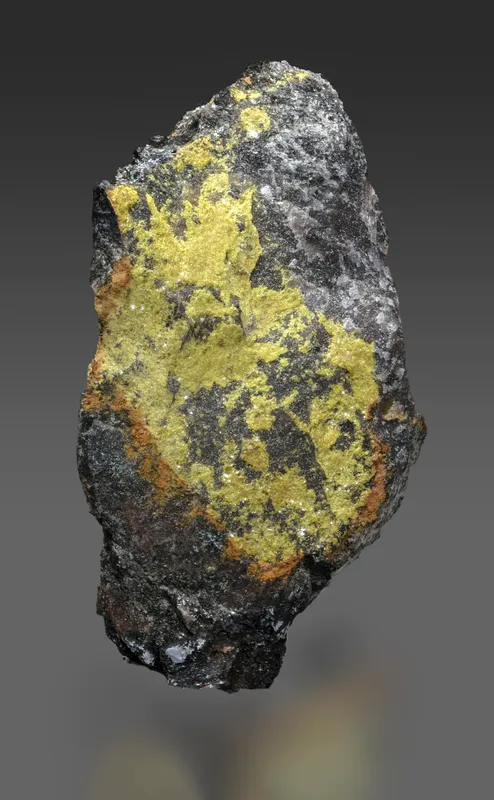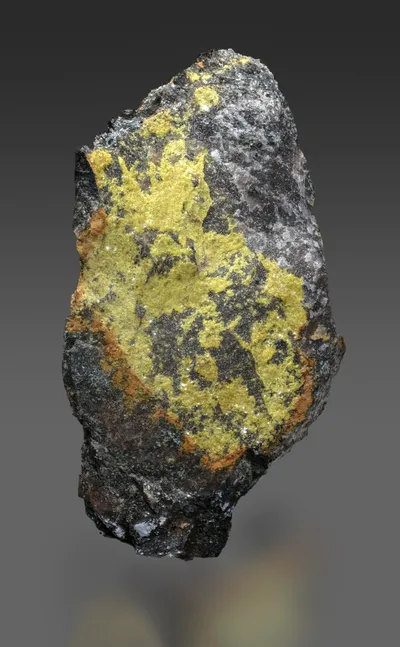
Image Credit: John Schneider
Mineral Species
Betpakdalite-CaCa
Type Locality
No
Composition
[Ca2(H2O)17Ca(H2O)6][Mo8As2Fe3+3O36(OH)]
Crystal System
Monoclinic
Status at Tsumeb
Confirmed
Abundance
Very rare
Distribution
Second oxidation zone
Paragenesis
Supergene
Entry Number
Species; TSNB49
General Notes
Formerly betpakdalite but renamed betpakdalite-CaCa as part of the reclassification of the heteropolymolybdate family by Kampf et al. (2012).
Betpakdalite-CaCa occurs typically as canary-yellow, powdery, microcrystalline crusts, and more rarely as small, well-formed, mustard-yellow crystals, typically associated with quartz.
Betpakdalite was first documented from Tsumeb by Schmetzer et al. (1984). Keller (1984) described granular masses of greenish-yellow betpakdalite (to 5 mm) in "… decomposition cavities" in quartz-rich chalcocite ore, and pseudo-octahedral or pseudo-rhombohedral crystals of betpakdalite (to 0.5 mm).
Kampf et al. (2012) pointed out that some of the analyses originally reported by Schmetzer et al. (1984) would be consistent with a probable new member of the betpakdalite group – betpakdalite-CaK – with potassium occupying the B-site (or non-framework site) in the crystal structure. They did not encounter the same chemistry in their study, however, and so did not propose CaK as a new species.
Associated Minerals
chalcocite; gerdtremmelite (?); kaolinite (?); metazeunerite (?); ojuelaite (?); paradamite (?); pharmacosiderite (?); philipsbornite; powellite; quartz; scorodite




